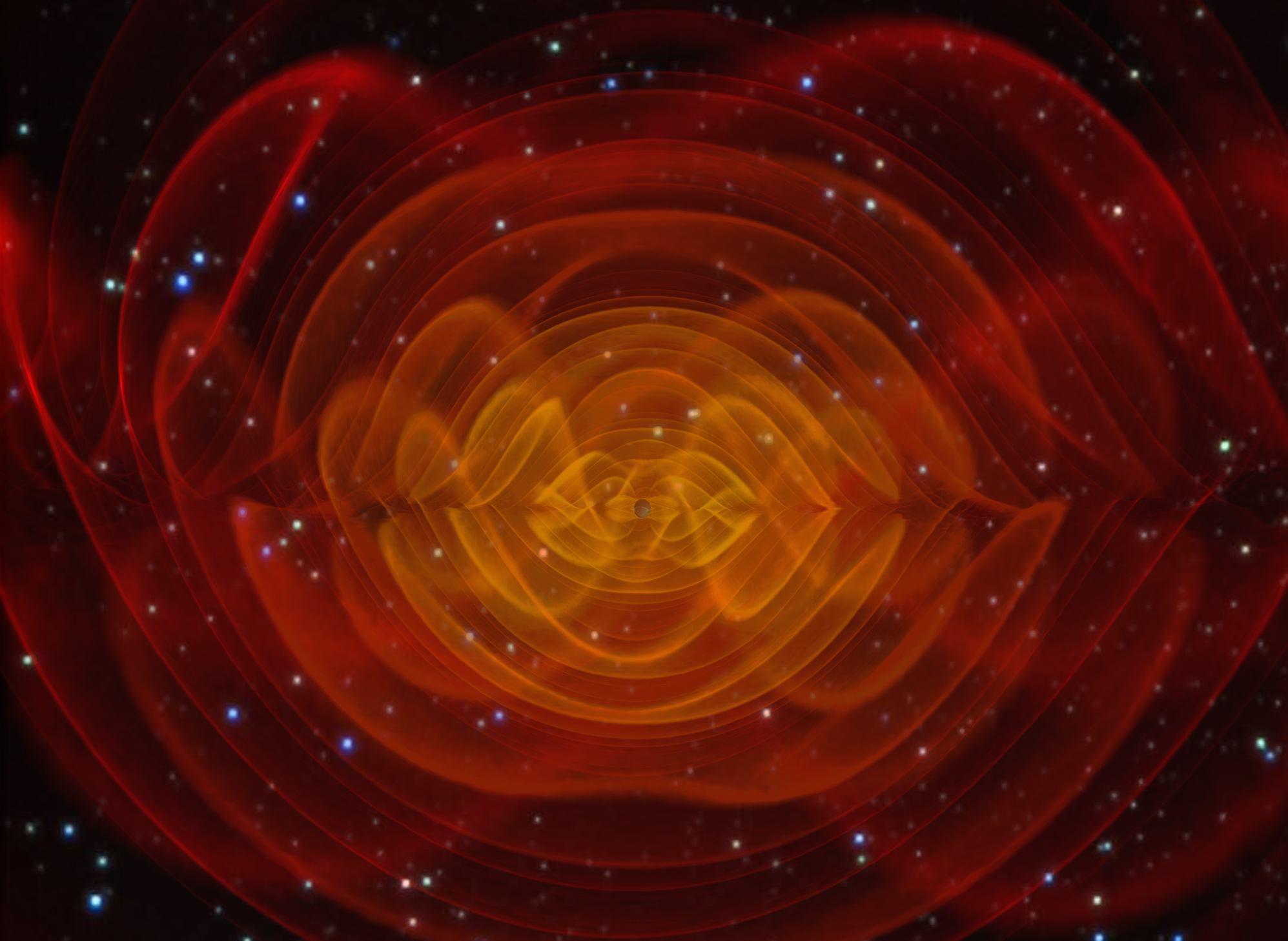February 12, 2018

by Mia DeFino, MS
A new calculator developed by cosmologists at the University of Chicago provides a convenient way for scientists to estimate how far we’ll be able to “hear” black hole collisions.
Gravitational waves, vibrations in the fabric of space-time, have gained substantial recognition in the two years since the waves were first “heard” in 2015 at the two Laser Interferometer Gravitational-wave Observatory (LIGO) detector sites in the US. In 2017, the Nobel Prize in Physics was given to three LIGO scientists for discovering gravitational waves.
The calculator, developed by University of Chicago cosmologist Daniel Holz and his former graduate student Hsin-Yu Chen (now a postdoctoral fellow at Harvard) using Research Computing Center (RCC) resources, provides a way for scientists to estimate the strength of the vibrations generated by gravitational waves and thereby characterize the distances to the sources of the waves.
“Now that we know gravitational waves exist, we need to figure out how far away we can detect them,” said Holz, who is an associate professor in the Kavli Institute for Cosmological Physics, Enrico Fermi Institute, and the Departments of Physics and of Astronomy & Astrophysics.
“Einstein thought it would be impossible to detect gravitational waves and in the past two years we have started to detect them routinely. The two LIGO detectors are like 2.5-mile-long ears that can ‘hear’ vibrations in space and time,” Holz said. “However, existing methods for measuring cosmic distance were oriented toward sight and we needed to repurpose them for hearing. We wrote a paper laying out how to do this, and the online calculator lets people do this for themselves.”
The calculator allows physicists to determine a range of interesting distance quantities. Given the parameters of the coalescing binary system and the sensitivity of the detector, the calculator can tell at which distance such gravitational-wave sources could be detected. Gravitational waves expand the way astrophysicists can explore the universe -- where previous limitations for cosmological distances were related to how far astrophysicists could see, the limitations with gravitational waves relate to how far and how well astrophysicists can hear.
The calculator was made possible in close collaboration with the Research Computing Center (RCC) and Igor Yakushin, PhD, computational scientist, who is part of RCC and KICP. In the original code, developed by Hsin-Yu Chen, the computations with some input parameters could take up to an hour. Yakushin developed an online platform for the gravitational-wave calculator, and accelerated the original Python code about 200 times to make it interactive. The calculator is hosted on a RCC web server and actual calculations are submitted to RCC’s Midway High Performance Computing cluster.
“There have been many requests to add even more functionality to the calculator, but the calculator is getting a lot of use as it is,” said Holz. “Even my own group is using it all the time as we continue to learn about the expansion of the universe.”